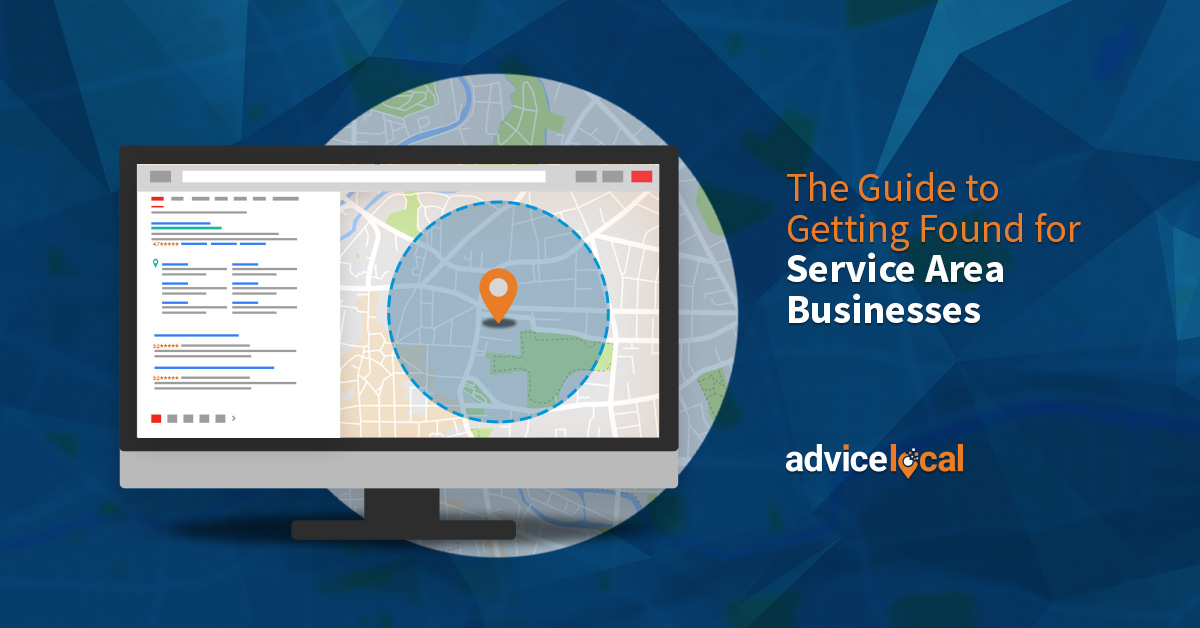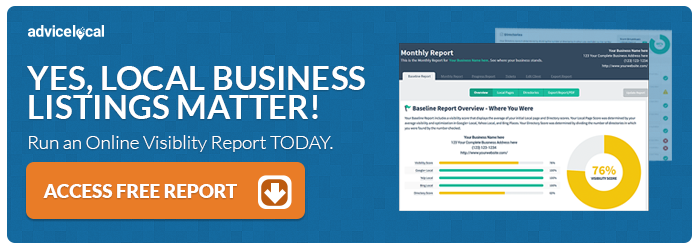Today, more and more companies are operating without a firm business location. Whether a business functions via an online website or from somebody’s house, it still needs to draw in customers just like any other company with a storefront does!
I’ve talked quite a bit about service area businesses (SABs) before, but since at Advice Local we’re all about getting local businesses found online – service area businesses included! – I thought I’d share more insights with you. Because service-based businesses function a bit differently from other companies, marketers often struggle with how to optimize them for search engines.
This time, I want to give you a comprehensive overview of our top beginner steps for service area businesses. These tips are vital to making businesses safe and profitable.
The Basics for Service Area Businesses
According to Google’s most recent guidelines, service area businesses can now remove their address from their listing or hide it. This is especially beneficial to SAB owners who operate from within their own homes.
Because SABs can still use Google Business Profile (formerly Google My Business) (GBP) listings, even without a public business location, it’s essential that they focus on obtaining local organic results. Basic information like names, addresses and phone numbers (NAP) should be correctly listed in multiple directories.
One thing service area businesses need to consider is how local users will find them if they don’t have a brick-and-mortar location. This is especially important to think about when the company has multiple service areas or branches. In many ways, SABs need local search engine optimization more than any other kind of business. People must be able to find the company naturally, even if they never visit an office or see the business in person.
To sum it up, the first basic step is to begin optimizing for search engines by creating accurate listings with directories like GBP. It’s a simple first step, but one that has massive, long-lasting benefits. Here’s a walk-through for optimizing a GBP listing for service area businesses.
SABs and Voice Search Optimization
Now that the SAB is listed, it’s time to think about the future and voice search optimization. According to a study by BrightLocal, roughly 58 percent of consumers have used voice search to find a local business’ information in the last year, and about 46 percent of voice search users look for local businesses daily. Voice search isn’t a passing trend – it’s a tool that will change how local businesses reach customers for the foreseeable future.
A large chunk of voice search users rely on the phrase “near me” when posing a query to their smart speaker or voice assistant. That’s where the local aspect comes in; Google loves providing users with answers based on relevancy and proximity.
Because service area businesses often do not have brick-and-mortar locations, they should consider additional ways to establish this local presence to appear in voice search results. This can be done through locally relevant content, listings that indicate areas served and a strong presence on social media. I’ve written post after post on voice search optimization strategies, produced a voice search guide and created the first-of-its kind voice search readiness algorithm and voice search readiness test, so when I say voice search is important, it’s no joke.
Why the Featured Snippet Matters to Service Area Businesses
You’ll never see Advice Local downplaying the significance of Google’s coveted featured snippet. It’s like being dealt a winning card when it comes to SEO and voice search. Not only is it the first thing people see on a desktop search, but it’s also where Google usually pulls answers for voice searches. Therefore, obtaining a featured snippet gets local businesses (including SABs) a substantial amount of attention from potential customers.
There’s no “right” way to snag the featured snippet, but there are a few things that will increase a business’ chances. Answering questions like “how to…” and “what is…” is a smart technique because it appeals to the phrases people typically use to search. Keep the answers short and concise, but also include the important answers in long-form content to establish authority.
The Yelp Strategy
Every local business needs reviews to survive, including – and especially – companies without a storefront that rely on recommendations to get more customers. That’s where websites like Yelp come into play. These sites allow SABs to interact with customer reviews and establish a positive reputation with locals.
Don’t have a profile on Yelp? Claim it ASAP by creating an account. You don’t even have to be the business owner to do this, just a verified representative. Check out our guide for more help creating a listing with Yelp.
Remember to add photos to Yelp and other review sites, even if there aren’t pictures of the business’ storefront location. High-quality images of products, company members and services can go a long way toward establishing authority and trust with local consumers.
Respond to reviews in a polite, understanding tone. No matter how angry or unreasonable a reviewer might be, stay true to the business’ brand and keep things professional. According to BrightLocal’s study, a whopping 89 percent of prospective customers read the business owner’s responses to online reviews before deciding whether to contact the company. Show locals that the business cares about its customers and is authentic.
Social Media Platforms
People might not see SABs on the side of the road, but that doesn’t mean they should miss them on sites like Facebook and Twitter. Social media platforms allow service area businesses to establish an online personality that engages with potential customers and creates a local presence, even without an in-person location.
Use social media to post engaging photos that earn consumers’ trust. These photos are especially powerful if they highlight local relevancy. For instance, if the SAB provides landscaping services, post a picture of the work the company did on a local park or another location that viewers would recognize.
Social media also gives SABs the chance to connect with other local businesses. Online partnerships and interactions can bring many potential customers, especially if the interactions are only positive.
Advice Local Helps Service Area Businesses Each Day
We know that ranking against other local businesses can be difficult for SABs, but with our help, it is possible to get found online and establish a presence within the community. Our tried-and-true plan for service area businesses will get the results you need for the SABs you represent. Request a demo today to learn all about it.




